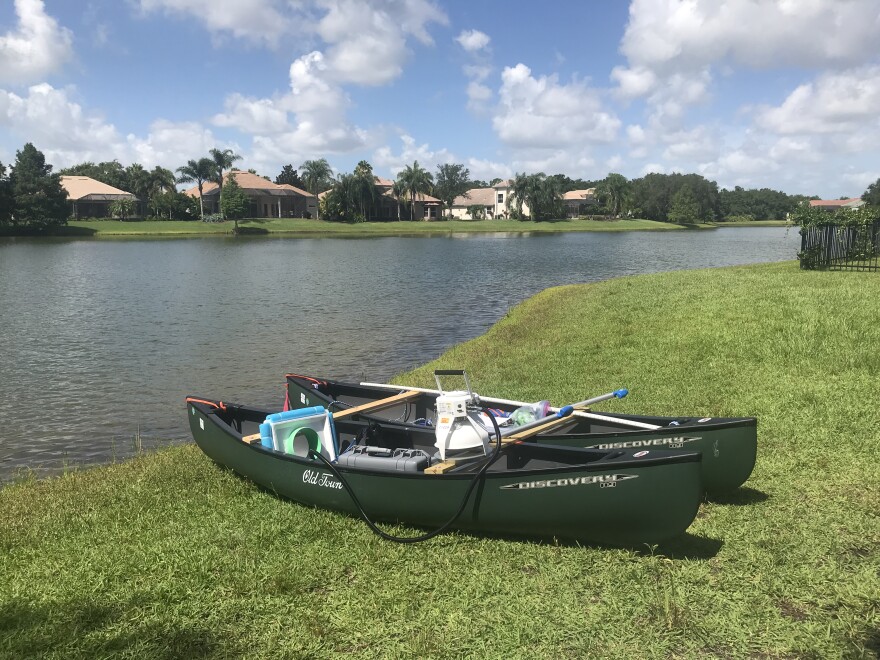Nutrients from stormwater and reclaimed water are feeding red tide algae blooms, according to findings from a peer-reviewed study out of the University of Florida.
There are over 76,000 urban stormwater ponds across Florida, and the state leads the nation in reclaimed water use, primarily in residential areas.
Amanda Muni-Morgan, a PhD student at UF studying ecology, said it’s already known that stormwater ponds are exporters of nutrients, which is a problem if they're connected to coastal water bodies. She added that misuse of reclaimed water is also detrimental because it can end up into stormwater conveyances.
Her team at UF partnered with Mote Marine Laboratory in Sarasota and the National High Magnetic Field Laboratory in Tallahassee. They collected samples from three stormwater ponds in Brandenton and the Southeast Water Reclamation Facility.
“Those samples were taken back to the lab and filtered and added to pure cultures of Karenia brevis that are grown at Mote Marine Laboratory. And once they were added, we monitored them every 24 hours looking at the changes in their biomass,” she said.
The researchers found that nutrients from those water samples stimulated growth of the toxic red tide organism Karenia brevis. Not only that, they noted that water coming from the youngest stormwater pond made the bloom grow more.
“So we had a 14- and 18- and a 34-year-old pond that we used that effluent, and we added it to cultures of Karenia brevis that were grown at Mote Marine Laboratory,” said Muni-Morgan.
“We also added reclaimed water in the same amounts, and we looked at the DOM, or the dissolved organic matter, compound change from the start of the experiment, to the final time point. And what we saw was Karenia brevis, utilized more compounds from the reclaimed water and the youngest pond.”
She said that’s important.
“Because if we see that these two effluent sources can stimulate growth in Karenia brevis, then we can potentially target these nutrients and prevent them from entering bloom impacted waters," she said.
Muni-Morgan said she doesn’t know exactly why the younger ponds feed more nutrients, but she took an educated guess.
“So my hypothesis would be that the youngest pond had more fresh or, or what we call labile material, that was more available for Karenia brevis to use for growth,” she said.

Red tide blooms can kill marine life, cause respiratory irritation for people and halt the coastal economy.
"People who live here along the coast really value coastal resources, they really valued going to the beach and fishing in the bay and wanting or relying on optimal water quality. So that's why I can't stress enough that we each can do something that's tangible now, instead of waiting for something to happen on the management end," she said.
UF has another ongoing study investigating ways to retain or remove nutrients from these waters, she said.
Muni-Morgan's study was published in the journal Science of the Total Environment.
“I'm hoping that stakeholders in the public in the private sector can look at this and think how can we take information gleaned from this study and improve what we do: How do we manage our ponds? How do we manage stormwater? What can we do to improve that and make it scientifically based?” she said.
“Anything that you do to improve water quality costs money, so it's important to use something that's based off of science to know that whatever we do is actually going to improve water quality.”
Copyright 2023 WUSF 89.7. To see more, visit WUSF 89.7.







